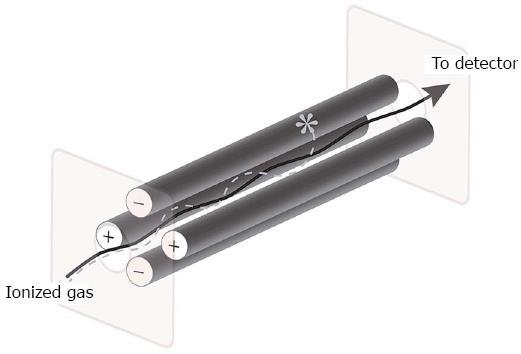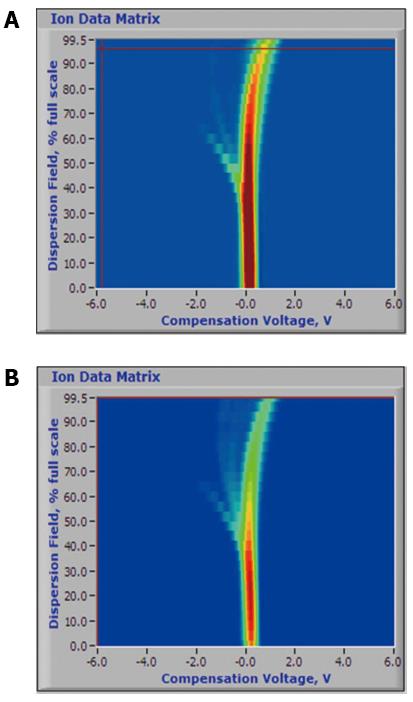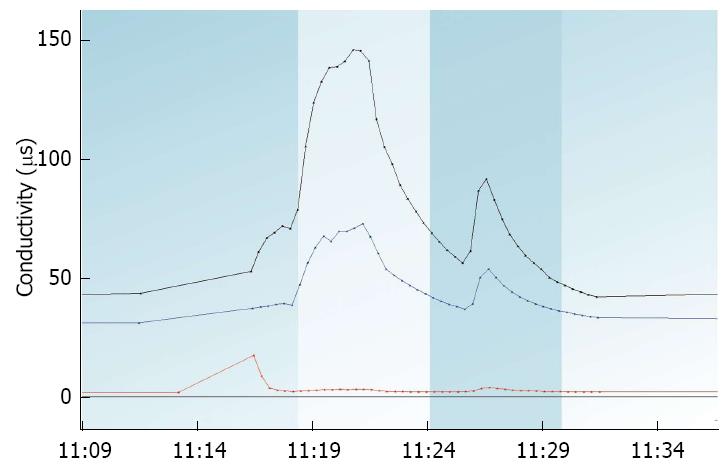Copyright
©The Author(s) 2016.
World J Gastroenterol. Jan 28, 2016; 22(4): 1639-1649
Published online Jan 28, 2016. doi: 10.3748/wjg.v22.i4.1639
Published online Jan 28, 2016. doi: 10.3748/wjg.v22.i4.1639
Figure 1 Quadrupole mass filter schematic: ionized gas enters the quadrupole through a slit and interacts with charged metal poles.
Based on mass and charge, different ionized gases successfully pass through a second slit to a detector that measures the mass-to-charge ratio of the ionized gas (solid arrow), while other ionized gases will collide with metal rods and will not reach the detector (dotted line and asterisk).
Figure 2 Example output of the owlstone lonestar field-asymmetric ion mobility spectrometry device of breath volatile spectra of limonene (A) and isoprene (B)-volatile organic compounds associated with lung cancer detection.
Courtesy of Owlstone Nanotech, used with permission.
Figure 3 Example output of the eNose company aeonose device identifying aggregate volatile organic compounds signal output from clinical breath analysis using its 3-sensor array spanning a 10-min breath sample.
- Citation: Chan DK, Leggett CL, Wang KK. Diagnosing gastrointestinal illnesses using fecal headspace volatile organic compounds. World J Gastroenterol 2016; 22(4): 1639-1649
- URL: https://www.wjgnet.com/1007-9327/full/v22/i4/1639.htm
- DOI: https://dx.doi.org/10.3748/wjg.v22.i4.1639















